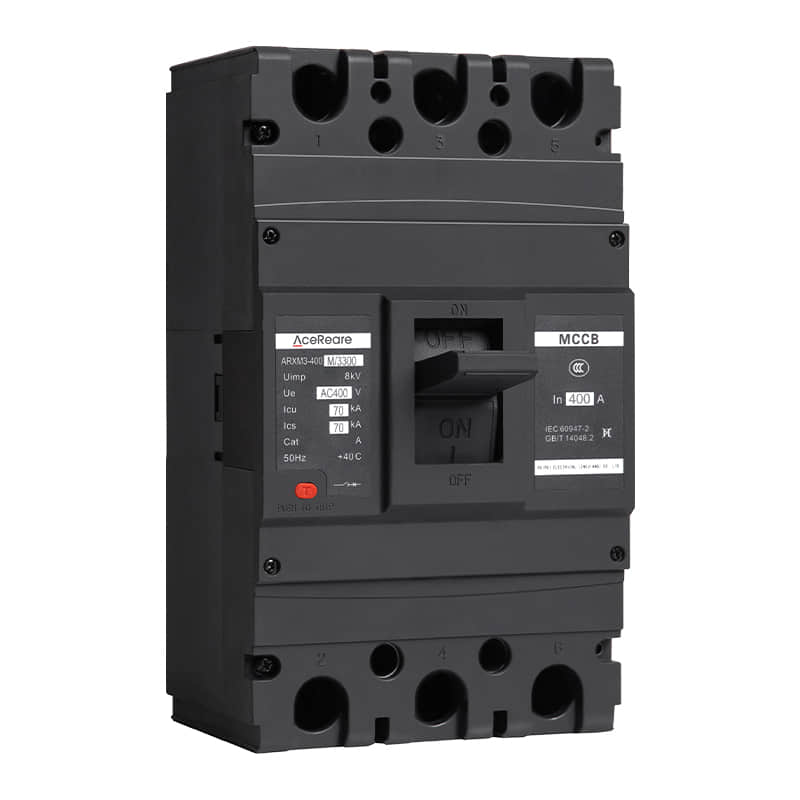
Date | 2024-06-13 02:50:57
A circuit breaker is an essential component in electrical systems, designed to protect circuits and electrical appliances from damage caused by overload or short circuit. Among the various types available, the 3 pole circuit breaker is a significant one, especially in industrial and commercial settings where higher voltage and current levels are involved. In this article, we will delve into the workings and applications of the 3 pole circuit breaker.
What is a 3 Pole Circuit Breaker?
A 3 pole circuit breaker is a device that interrupts the electrical circuit by switching off the flow of electricity when it detects abnormal conditions such as overcurrent, short circuit, or ground fault. Unlike single-pole or double-pole breakers, which interrupt only one or two conductors respectively, the 3 pole circuit breaker simultaneously controls three conductors, providing enhanced protection in three-phase electrical systems.
Working Principle
The primary function of a 3 pole circuit breaker is to open the circuit when excessive current flows through it, thereby preventing damage to the connected electrical devices and wiring. It comprises three identical switch mechanisms, each responsible for interrupting the current in one of the three conductors. These mechanisms are triggered by an electromechanical trip unit, which detects abnormal current conditions.
When the current exceeds the predetermined threshold, the trip unit sends a signal to the switching mechanism, causing the contacts to open and halt the flow of electricity. This swift action safeguards the electrical system from potential hazards and ensures the safety of personnel and equipment.
Applications
The 3 pole circuit breaker finds widespread use in various industrial and commercial applications where three-phase power distribution is common. Some typical applications include:
Industrial Machinery: Three-phase motors and equipment used in manufacturing plants and industrial facilities require robust protection against overcurrent and short circuits. 3 pole circuit breakers offer reliable protection in such environments, ensuring uninterrupted operation and preventing costly downtime.
Commercial Buildings: Large commercial complexes, shopping malls, and office buildings often rely on three-phase power for efficient distribution of electricity. 3 pole circuit breakers installed in distribution panels help maintain electrical safety and stability throughout the premises.
Data Centers: With the increasing demand for data storage and processing, data centers require highly resilient electrical systems. 3 pole circuit breakers play a crucial role in safeguarding critical infrastructure and preventing electrical failures that could compromise data integrity.
Benefits
The use of 3 pole circuit breakers offers several advantages:
Comprehensive Protection: By controlling all three conductors simultaneously, 3 pole circuit breakers provide comprehensive protection against various electrical faults, ensuring the safety of both equipment and personnel.
Space Efficiency: Consolidating three switching mechanisms into a single device saves space in electrical panels and distribution boards, making them ideal for installations where space is limited.
Reliability: 3 pole circuit breakers are built to withstand high currents and harsh operating conditions, delivering reliable performance over an extended lifespan.
Conclusion
In conclusion, the 3 pole circuit breaker is an indispensable component in modern electrical systems, offering enhanced protection and reliability in three-phase power distribution networks. Its ability to swiftly interrupt the flow of electricity during abnormal conditions ensures the safety and efficiency of industrial, commercial, and institutional facilities. By understanding its working principle, applications, and benefits, electrical engineers and professionals can make informed decisions regarding the selection and installation of 3 pole circuit breakers in their projects.
